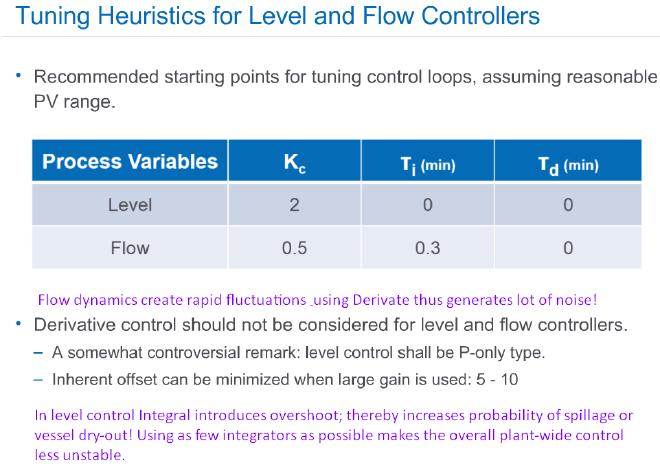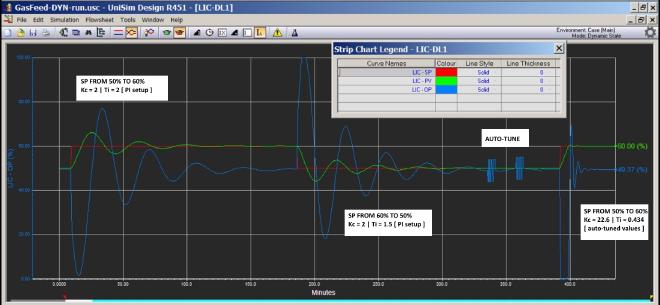PID Tuning in Dynamic Simulators
Table of Contents

In this article there is much to see & less to read; that I meant in literal! I am not going to delve into the spaghetti of differential equations (& algorithms henceforth developed) rather its a more look & learn approach. This is my sequential collection of videos/infographics to get anyone up & running with PID tuning as applied in various simulators like HYSYS, UNISIM, VMGSIM. Tids & bits that I gathered from around the internet are presented in a sequence & readers are encouraged to abide by that (at least I feel it that way).
Pre-requisites of simulation #
For each part duration is included in Hours:Mins:Secs
- An intro to the PID equation [Duration 00:00:44] Link
- Visualize how system stability, robustness is influenced by P, PI & PID combinations [Duration 00:01:15] Link
- Trivial definitions of the key dynamic parameters like gain, capacitance, dead time etc. [Duration 00:00:48] Link
- Good starting estimates for Kc, Ti & Tc for developing common industrial control loops like LIC, PIC, TIC etc. Also useful when user directly wants to apply in situ PID tuning (Close loop tuning) or just want to play around with tuning parameters to get that guru feeling. [Duration 00:00:26] Link
- [Open-Loop tuning (a)] In this tutorial two methods are compared namely Ziegler Nichols & ITAE. Both methods are still heavily practiced with the latter being a more recent development. This paper uses MATLAB to visualize differences between the two approaches as well. [Duration 00:08:19] Link
- [Open-Loop tuning (b)] Being an owner of a very old HYSYS version (3.1) this video from the days of WIN NT still impact my DCS engineering practices. IMC tuning method is very robust & comprehensible as well. This paper reflects upon simple graphical techniques to effectively apply IMC or Lambda tuning to process controls. Pay particular attention (not included in video) to the selection of desired loop response time & variation in the Kc formula when dead time isn’t zero. [Duration 00:06:26] Link
- [Closed-Loop tuning] This method is only available for recent version of simulators like HYSYS v8.8 on wards. This method is simple only when machine does it for you! The underlying math is easy. [Duration 00:07:06] Link
All related files are uploaded here. For further reading I highly recommend Chapter 8 from the book Process Analysis and Simulation in Chemical Engineering - Springer
Simulation setup #
Now to get that guru feeling


Using UNISIM R451 which does have a good documentation on tuning
- Start with the estimates (level control) > Create disturbance > Get Manipulated Variable (MV) & Control Variable (CV) profiled
- Wait for system steadiness > Create disturbance > Get MV & CV profile [Deduction: reducing Ti generates more ripples in CV around set point]
- Wait for system steadiness > Initiate auto-tuner (twice for good average) > Use auto-tuner parameters to calculate new values for Kc & Ti > Create disturbance > Get MV & CV profile [Deduction: CV ripples vanished & control is more robust but MV (& thus the valve) became hypersensitive at the beginning]